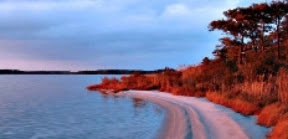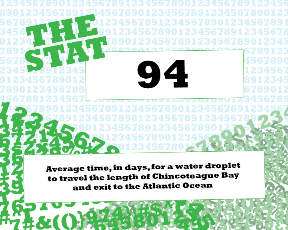eMDE – Improving Maryland’s Coastal Bays
THE LATEST FROM THE MARYLAND DEPARTMENT OF THE ENVIRONMENT
FEATURED ARTICLE
IMPROVING MARYLAND’S COASTAL BAYS
The United States Environmental Protection Agency has approved pollution limits set by Maryland to help improve water quality in the state’s coastal bays.
The limits approved by the EPA are contained in Total Maximum Daily Loads (TMDLs) for the nutrients nitrogen and phosphorus for the Maryland Coastal Bays.
The Maryland Coastal Bays – Assawoman, Newport, Isle of Wight, Sinepuxent and Chincoteague Bays – lie between the barrier islands (Assateague Island and Ocean City) to the east and the mainland of Worcester County on the west. The Coastal Bays’ watersheds are connected to the Atlantic Ocean by inlets near Ocean City and near Chincoteague Island in Virginia. These shallow lagoons provide critical habitat for commercially important seafood and numerous wildlife species. Vacationers and tourists to the Ocean City and Assateague Island areas use the Coastal Bays for boating, water skiing, fishing and other recreational activities throughout the year.
“The Maryland Department of the Environment appreciates the support of Worcester County and our other partners in the Maryland Coastal Bays Program and the members of the Coastal Bays Implementation Committee,” said MDE Secretary Robert M. Summers. “Putting this blueprint into place to reduce pollution will continue to allow future generations of Marylanders to enjoy fishing, swimming and recreating in the waters of one of the State’s greatest natural treasures.”
Nutrients are, of course, essential for aquatic life. Over the past few decades, however, the Coastal Bays, like the Chesapeake Bay and many other water bodies, have received too much of a good thing. Excess nutrients cause . . .
IN THE NEWS
Capital-Gazette: Saving the Bay one barrel at a time
Residents of an Anne Arundel County community are helping to Reclaim the Bay by rediscovering rain barrels. Read more
Majority of local governments show progress on Chesapeake Bay restoration effort
Evaluation of twenty-two sets of goals for local water restoration activities shows that Maryland’s communities are committed to improving the water quality of their streams, rivers, lakes and drinking water reservoirs and they are making progress. Read more
Baltimore Sun: Programmers answer O’Malley’s challenge to create bay-friendly apps
Eighty bright minds from around the state – from precocious high-schoolers to CEOs of technology companies – hunkered down for a Chesapeake-oriented marathon programming competition. Read more
AIR, LAND, WATER – DID YOU KNOW?
Bay 101
Want to know more about Maryland’s blueprint for Chesapeake Bay restoration? Check out MDE’s new webpage on the blueprint — and our new Bay 101 video.
Compost challenge
Did you know that food scraps and yard waste make up nearly a third of the municipal waste stream? Food waste reduction and composting offer a viable solution (and a nutrient-rich soil supplement), and a growing number of Maryland Green Registry and Maryland Green Travel members have been leading the way. Your business or organization is invited to join the Green Registry — and take the Compost Challenge. Read more
Become a Climate Champion
Do you love Maryland? Are you environmentally friendly and want to spread the word to your community about what folks can do everyday to help act on climate? Then become a Climate Champion! Learn more. Get certified. Help lead the way. Read more
Water quality
Maryland’s Integrated Report of Surface Water Quality is open for public comment through September 24. The report helps to prioritize which watersheds should be addressed by TMDLs or restoration and those watersheds that are in need of more protection. MDE will hold an public informational meeting at its headquarters on September 8 to discuss the report. Read more
THE STAT
 About this STAT
About this STAT
Pollution limits are established using a state-of-the-art model and recent data to determine reductions needed to meet water quality standards. The rate of water flow is one of the factors that MDE scientists consider.
HAVE AN IDEA?
Email the Editor
We’re always looking for ways to make eMDE even better. Here’s a chance to tell us what you think. Have some thoughts on what we can do better or things you’d like to see more of? An idea for a specific story? We want to hear from you. Contact us!
MDE’s MISSION
Our mission is to protect and restore the quality of Maryland’s air, water, and land resources, while fostering smart growth, a thriving and sustainable economy and healthy communities.


